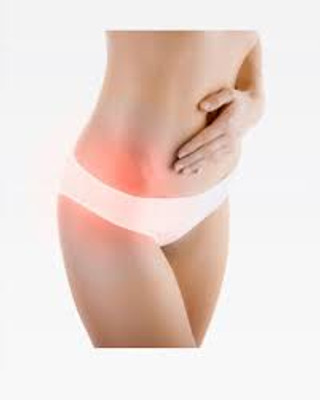 2nd Sep 2015
2nd Sep 2015
Top 5 Treatments for Hip Bursitis
Greater Trochanteric Bursitis , also known as greater trochanteric pain syndrome, is one of the most common

causes of hip pain. Greater trochanteric bursitis is most common in moderately active, middle-aged females or those who have recently increased their activity level. Pain on the outside of the hip from greater trochanteric bursitis can result in a limited ability to lie on the involved side, walk, climb stairs, squat, or participate in recreational activities. To treat greater trochanteric bursitis, physical therapists typically prescribe a combination of stretching and strengthening activities to decrease irritation in the hip and utilize specific modalities to relieve pain.
What is Greater Trochanteric Bursitis?
Greater trochanteric bursitis is an irritation of the bursa, a fluid-filled sac that sits on top of the greater trochanter, the bony prominence on the outside of the hip bone (femur). The bursa acts as a cushion which decreases friction between the outside of the hip bone and muscles attaching to the hip bone. Greater trochanteric bursitis results when the bursa on the outside of the hip becomes irritated.
Greater trochanteric bursitis may result from a combination of several different variables, including:
- Iliotibial (IT) band tightness (a thick band of tissue that runs along the outside of the leg from the pelvis to the knee)
- Hip muscle tightness or weakness
- Abnormal hip or knee structure or mechanics
- Improper technique with repetitive activities
- Change in an exercise routine or sport activity
5 treatments for Greater Trochanteric Bursitis
Physical therapy treatment for Greater trochanteric bursitis is designed to reduce irritation, pain, strengthen and stretch the muscles of the hip. Treatment will utilize a number of different methods to achieve these goals.
- Manual therapy: The physical therapist may apply hands-on treatments to move the muscles and joints in order to improve their motion and strength, most likely in the back or hip.
- Muscular strengthening: Muscular weaknesses or imbalances can result in excessive strain at the greater trochanter. The physical therapist will design a safe, individualized, progressive resistance program including the core (midsection) and lower extremity.
- Ultrasound: Therapeutic Ultrasound is a form of deep heating in which sound waves are applied to the skin and penetrate the soft tissue. Ultrasound is especially helpful in relieving acute pain and may increase tissue healing.
- Transcutaneous Electrical Nerve
Stimulation (TENS): TENS unitsuse electrical stimulation to modulate the sensation of low back pain by overriding the
painful signals that are sent to the brain.

- Kinesio tape: Kinesio taping is a form of sports taping that encourages the lymphatic and circulatory systems to flow and work efficiently through the specific placement of strips of Kinesio tape which aids in reducing pain and swelling. When applied correctly to the hip area, kinesio tape can increase stability in the joint and support the surrounding muscles ready for daily activities.
Hip pain is fairly common in the United States, with 1 in 4 Americans suffering from chronic hip pain at some point in their life. Pain in the hip can lead to disability, increase a patient’s fall risk, and eventually lead to the need for a hip replacement. 300,000 hip replacements are performed in the United States each year, while hip fractures are the most detrimental of fractures, associated with 20% mortality rate and 50% permanent loss of function. It’s important for patients to seek treatment for hip pain as soon as the pain begins to keep them functional and maintain their quality of life as they age.
For more information about physical therapy and popular modalities please see our blog at ProHealthcareProducts.com.






